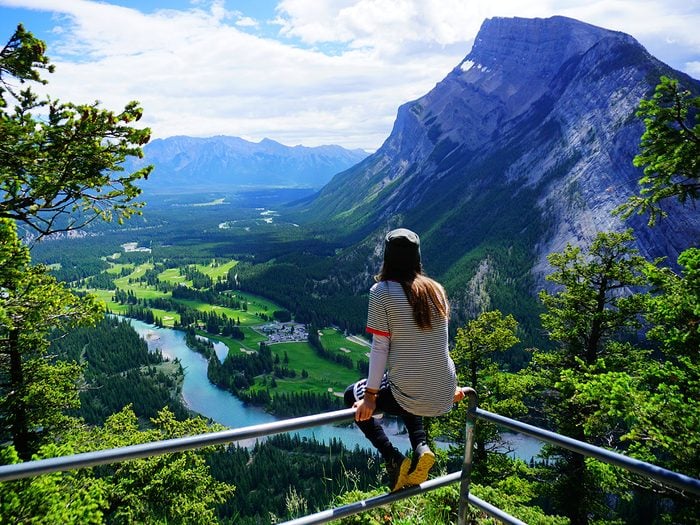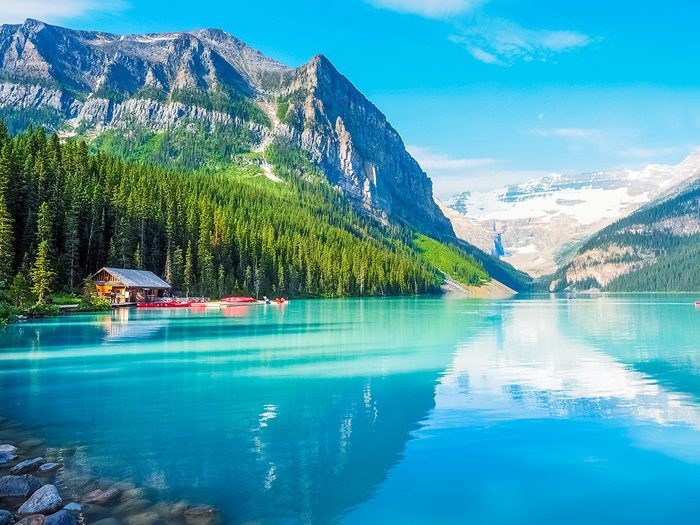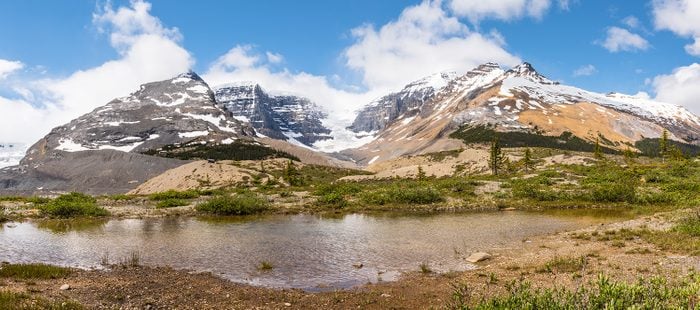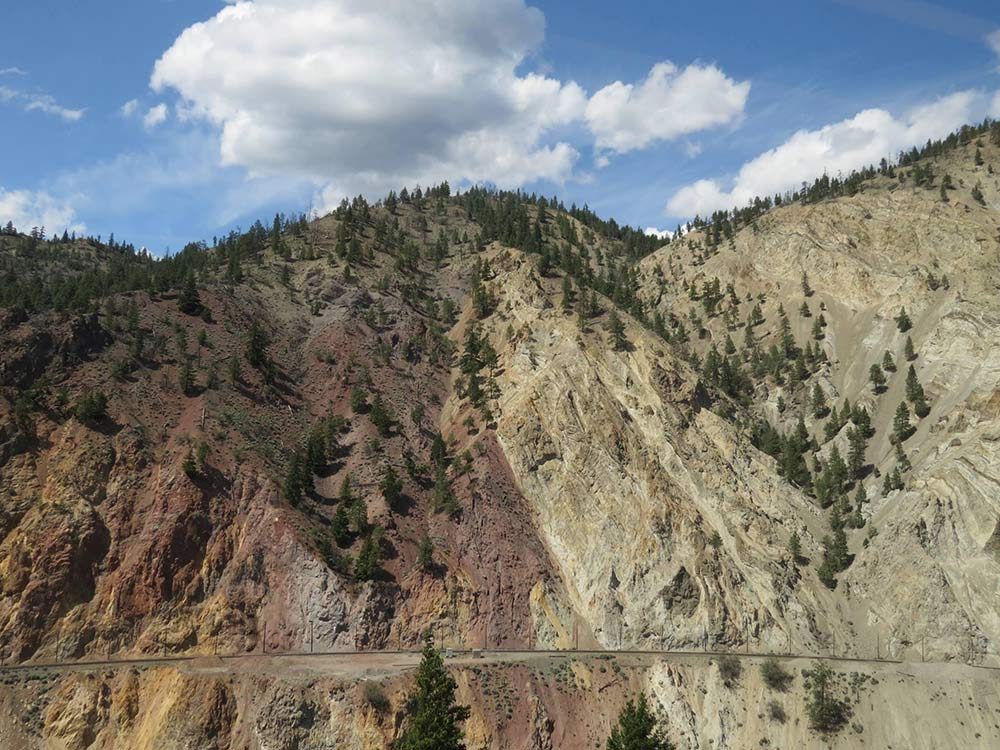
Facts About the Rocky Mountains Most People Don’t Know
There’s no tunnel in Banff’s Tunnel Mountain
Of the popular Rocky Mountain peaks in and around the town of Banff, Alberta, only Tunnel Mountain could be considered a relatively easy climb. In fact, the biggest challenge you’re likely to encounter on the one- to one-and-a-half hour hike is the conundrum of its name—a real head-scratcher as there’s nary a tunnel to be found on the entire mountain.
The puzzle dates back to the mid-1880s, at a time when the Canadian Pacific Railway was expanding its rail line through Banff. CPR’s initial proposal was to lay the rails along the shortest possible route, which happened to be straight through the heart of the mountain. Perhaps realizing exactly how much dynamite would actually be required to blast a tunnel clean through, the plan was abandoned, and the rail line was instead laid around the mountain, following the course of the Bow River. Nevertheless, the name stuck, and Tunnel Mountain’s status as a great Rocky Mountain mystery was secured.
Read on for more fascinating facts about the Rocky Mountains most people don’t know.

Lake Louise owes its colour to the Canadian Rockies
Even if they weren’t surrounded by spectacular mountain scenery, the luminous turquoise waters of Lake Louise, Alberta, make it a must-see destination. (Here are the 10 places in Canada every Canadian needs to visit.) The thing is, without that mountain scenery, the lake wouldn’t have its legendary hue to begin with.
Lake Louise is fed by meltwater from the Victoria Glacier, which contains fine, ground-up particles of mountain rock—a substance known as “rock flour.” When the sunlight reflects off of this rock flour suspended in the frigid waters of the lake, the colour that’s reflected is the distinctive turquoise or emerald hue that’s famed the world over.
Discover more natural wonders of Canada that’ll take your breath away.

Snow Dome is a unique “Three-Ocean Peak”
Along the breathtaking Icefields Parkway—a highway connecting Banff and Jasper national parks, and one of the best road trips in Canada—lies the mighty Athabasca Glacier. A vast river of ice that’s been steadily retreating for 150 years, it and the much smaller Dome Glacier straddle one of the region’s great peaks: Mount Snow Dome (elevation 3,456 metres). Situated on the Continental Divide, it’s theorized that Snow Dome may actually be a rare “three-ocean peak,” where three drainage basins meet. What that means is that if you poured a cup of water at the summit of Snow Dome, the water could very well flow into either the Pacific Ocean to the west, the Arctic Ocean to the north, or the Atlantic Ocean to the east.
Here are 10 unforgettable things to do in Jasper.

You can tell a lot about a mountain from its colour
The more you travel through the Rocky Mountains, the more you’ll notice subtle gradients in colour from peak to peak. That’s no trick of the light. In fact, you can actually learn a lot about the mineral content of the rock itself simply by reading its hue.
A mountain with a reddish-orange tint likely has a significant iron content, for instance. As you might expect, given the colour of tarnished copper, a mountain containing that metal often appears greenish. A yellow mountain, on the other hand, suggests a high concentration of sulphur. On occasion, as in the striking Painted Bluffs near Kamloops, British Columbia, you can see many of these mineral deposits across the same multi-coloured rock face.
Next, discover 13 mind-blowing Canadian geography facts.